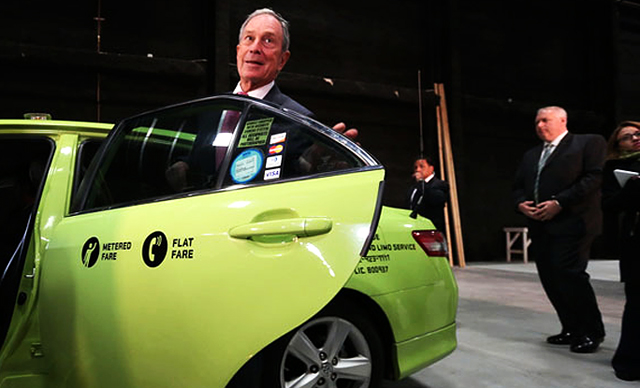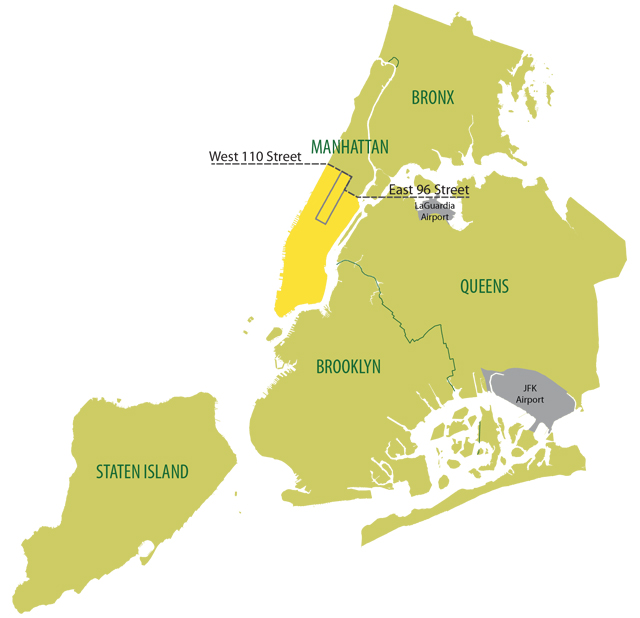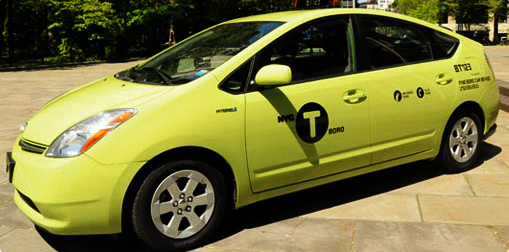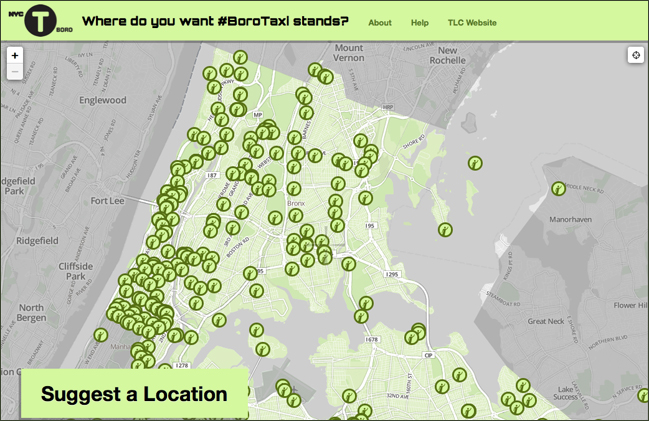Green Taxis in the Bronx

By Joshua Colon
In August, the city introduced green taxis, also known as the “boro taxis” in order to to provide cab service to tens of thousands of people who live and work outside of Manhattan. The TLC plans to authorize up to 6,000 apple-green cabs per year, for three years for a total of 18,000. On November 12, Mayor Bloomberg announced that there are 1,000 boro taxis on the streets and that nearly 300,000 trips have been taken since the launch.
New Yorkers have mixed reactions to the move. Bronx resident Lisa Alvarez says she is happy that prices will be more transparent. “I think it’s a great idea,” says Alvarez. “There are taxi companies that charge you a lot and sometimes the wrong price. The green cabs are using meters so you know that it will be the correct price.”
The difference between green and yellow cabs is that yellow taxi cabs are able to pick up passengers anywhere in the five boroughs, while the green ones are only allowed to pick up passengers in Upper Manhattan, the Bronx, Brooklyn, Queens, and Staten Island.

Map of green and yellow cab service areas.
Otherwise yellow and green cabs are pretty much the same says Fidel Faro at Super Class car service in the Bronx. “They both use meters and GPS and the same equipment,” says Faro. “The only difference is that the green taxis can’t pick up where the yellow taxis pick up.”
When it comes to pricing, the structure is the same. Meters are used in both.
Historically only yellow taxis were permitted to pick passengers up on the street. For-hire vehicles, also known as “livery cabs”, were only supposed to pick up passengers who called the car services dispatcher. This rule is rarely followed.
Livery cabs provide taxi service to the outer boros, but residents complain that there weren’t enough and they overcharged. Now, many of these livery drivers will make the switch to green. However, not all are happy about it because it comes with a cost. Green taxis will also be more regulated
Fidel Faro explained the process for converting from a livery to a green cab service. “As a company, we have to apply for a license to operate. After you have a license, you can have the drivers actually convert. As of right now, we have around 30 green taxis and we expect more of our drivers to apply.”
Drivers have to have their cars painted green and it must also include the taxi logo and cab information. They also have to have the affiliated base on the rear sides, along with up to date cameras, meters, and GPS. The GPS will not allow the meter to work if the cab is starting in Manhattan below East 96th or West 110th streets and in airports.

Some livery drivers say that they can’t afford the cost for converting their cars. “I asked for permission to convert to a green taxi because I didn’t want any problems with the city,” Nelson Benitez explained in Spanish. “I sent an application and less than a week later, they asked me for $2,400 dollars right away. I can’t afford this. My wife recently had a stroke and I have to pay for her medical bills. That isn’t counting the insurance and installation costs for some of the equipment. The entire thing is a headache and I’m struggling to come up with what they are asking.”

The city has set up a web site, www.borotaxis.org, where it is asking you to suggest spots for a boro taxi stand.
Fidel Faro explains that there are additional fees for renewing the license. “Every two years, you have to renew your license,” he says. “This is for both drivers and the company. It costs $1500 for the renewal plus $540 for inspection for three years. They have to pay it upfront and it comes out to $300. On top of that, there is an installation cost and a driver will have to pay over $3500.”
Faro says drivers can continue to operate as livery drivers if they wish. “You have a choice, if you don’t want to be green, you don’t have to,” he says. “You apply and it’s up to you to make the decision. If they apply and decided to go green, they have to comply with the rules and make sure that they are properly affiliated, licensed, and everything.”
Super Class employee Juan Pena expects that customers will likely pay more with green cabs. “The prices are going to be a little higher because we are going to be using meters instead of the set price we usually use,” says Pena. “An example is a trip to Castle Hill that costs $12, but with a meter it could cost more or less. We’ll see. We understand that customers won’t be happy about this but just like we will need to adjust as a company, they will have to adjust until things start running smoothly.”
Ana Delgado believes consistency and clarity are most important for commuters. “Hopefully, it all comes together because I rather pay the correct amount with a meter then to be overcharged,” says Delgado. “Even if it is a couple dollars difference, it adds up and you never know when you’ll need those couple dollars.”
Saved under Featured Slide, News, Transit
